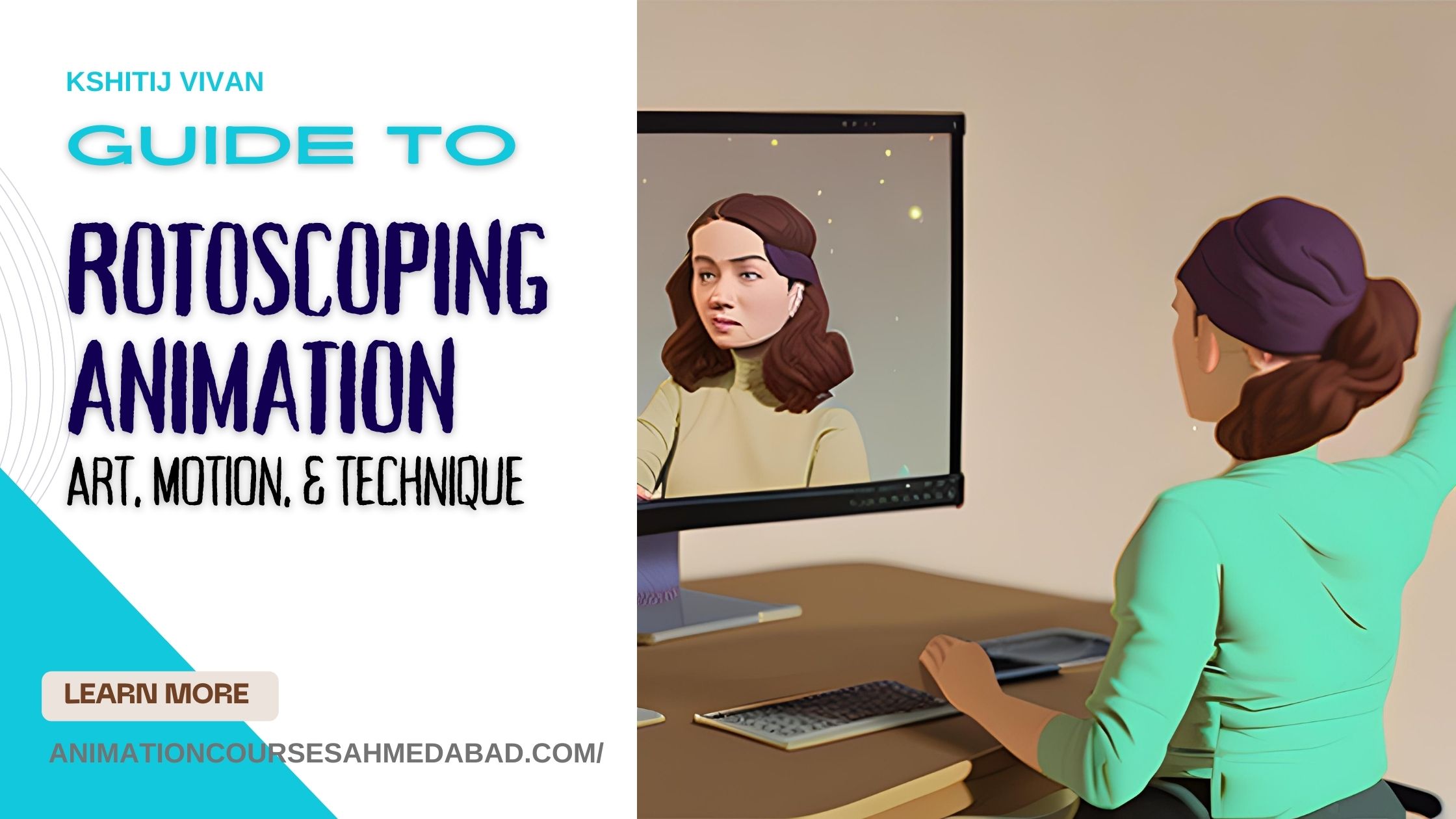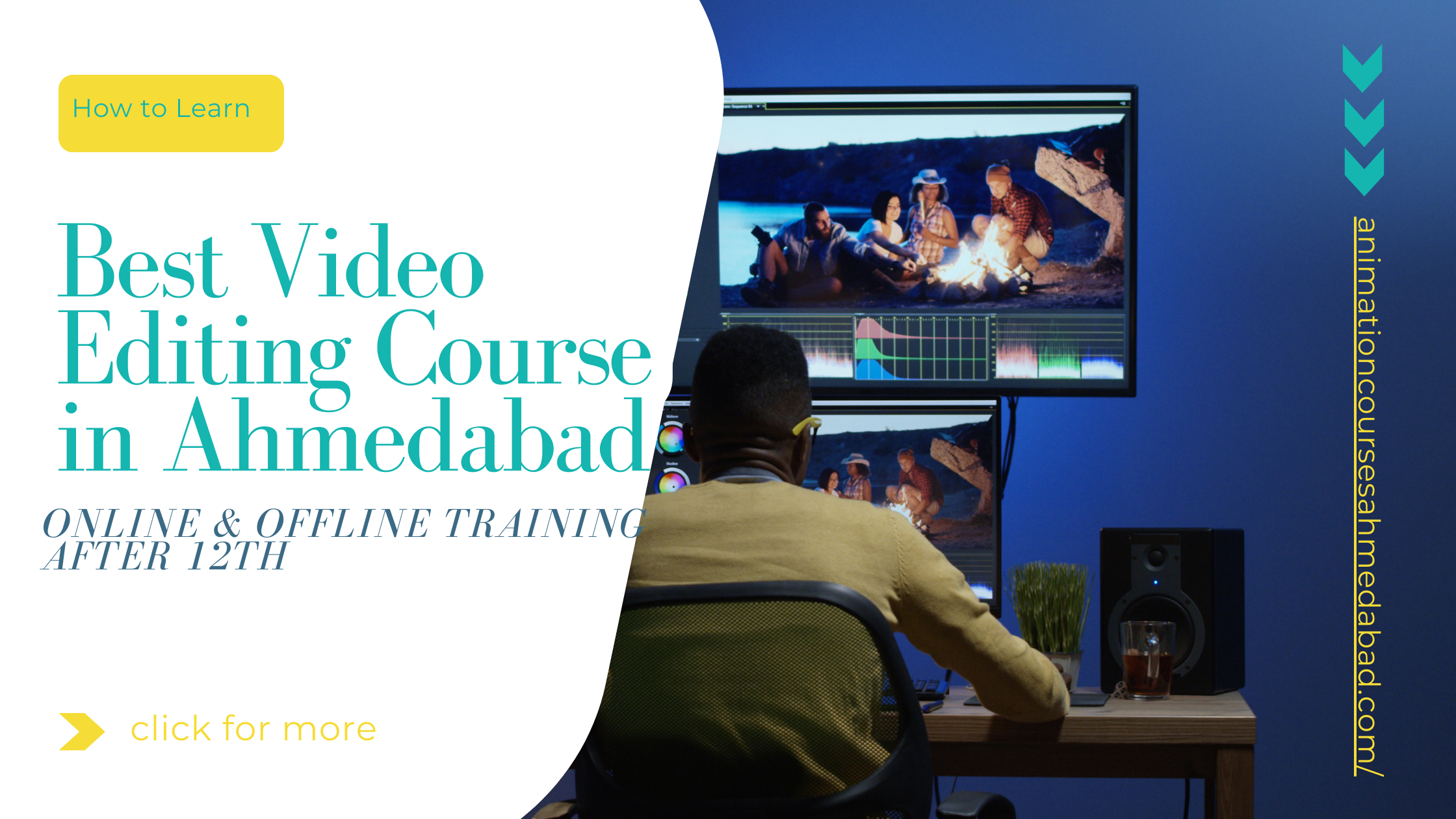
The Rotoscoping Animation Guide: Motion, History, Use, Software, Course (2023)
Step into the mesmerizing world where motion and artistry collide – Rotoscoping Animation.
Picture this: tracing the fluid movements of reality and transforming them into captivating animated scenes that defy imagination.
Welcome to an immersive journey through the evolution, technique, and boundless possibilities of Rotoscoping Animation.
In this blog, we'll unveil the magic behind the rotoscope intricate craft, from its historical roots to the contemporary software that empowers artists & animators
Plus, we will see its use, benefits, and how can you upscale your career with rotoscoping techniques, 3D animations, and VFX courses in 2023.
Get ready to explore the art of motion like never before, as we dive deep into the fusion of creativity and movement that defines Rotoscoping Animation.
The Evolution of Animation: From Traditional to Rotoscoping
Animation has come a long way, evolving from traditional hand-drawn frames to the digital marvels of today. Amidst this evolution,
Rotoscoping Animation emerged as a bridge between reality and artistry. It breathes life into static images, making them dance and come alive with fluid motion.
What is Rotoscoping Animation
At its core, Rotoscoping Animation is a harmonious blend of artistic expression and motion. It takes the essence of reality and translates it into animated brilliance. This technique holds the power to bring depth, emotion, and realism to characters and scenes, captivating audiences across industries.
Defining Rotoscoping Animation
Rotoscoping Animation defies the boundaries of traditional animation techniques.
It involves tracing over live-action footage frame by frame, extracting the essence of movement while infusing it with an artistic touch.
This fusion results in animations that resonate with authenticity and creativity.
Historical Insights: Tracing the Origins of Rotoscoping
The roots of Rotoscoping Animation can be traced back to the early days of animation.
Pioneered by Max Fleischer in Out of the Inkwell in the early 20th century, this technique was initially used to create realistic movements in cartoons.
Over time, it evolved, embracing new technologies while retaining its fundamental essence.
It was used in Hollywood movies first time in Snow White and the Seven Dwarfs.
Sourced Disney Plus
Breaking Down the Process: How Rotoscoping Works
Rotoscoping is a meticulous process that requires patience and precision.
It begins with carefully selecting source footage, which serves as the foundation.
Animators then meticulously trace over each frame, capturing the nuances of motion. This frame-by-frame dance between art and reality crafts animations that captivate the eye.
Benefits and Applications
The Power of Rotoscoping: Enhancing Realism and Fluidity
Rotoscoping's magic lies in its ability to infuse animations with unparalleled realism. It captures the subtlest movements, enabling characters to interact authentically with their surroundings. This technique grants animations an organic fluidity that engages and mesmerizes audiences.
Applications Across Industries: From Film to Advertising
Rotoscoping's versatility transcends industries.
In filmmaking, it can seamlessly integrate animated film elements into live-action scenes, expanding cinematic possibilities.
In advertising, it turns concepts into compelling visual narratives, capturing attention and conveying messages with impact.
Key Tools and Software for Rotoscoping
Rotoscoping, a technique that merges motion with artistic finesse, relies on a suite of essential tools and software.
These tools empower animators to bring their creative visions to life and transform live-action footage into captivating animations.
Let's delve into the key tools and software that are the backbone of the rotoscoping process:
Drawing Tablets and Styluses
At the heart of every rotoscope's arsenal lies a drawing tablet paired with a stylus.
These tools replicate the tactile experience of traditional drawing, allowing animators to sketch and trace with precision.
The pressure sensitivity and ergonomic design of modern tablets make them an extension of the animator's hand, ensuring fluid and natural movement translation.
Softwares:
Rotoscoping software forms the digital canvas where the magic unfolds.
These software solutions offer a range of features that facilitate the intricate process of frame-by-frame animation.
Some prominent names in the realm of rotoscoping software include:
-
Adobe After Effects: A versatile software that supports various animation techniques, including rotoscoping. Its robust toolset and integration with other Adobe Creative Cloud applications make it a popular choice.
-
SilhouetteFX: Known for its advanced rotoscoping capabilities, SilhouetteFX offers an array of features for precise masking, tracking, and image manipulation.
-
Toon Boom Harmony: Widely used in the animation industry, Toon Boom Harmony provides an all-in-one platform for various animation styles, including rotoscoping.
-
Mocha Pro: Leveraging planar tracking, Mocha Pro streamlines rotoscoping by enabling accurate tracking and masking, reducing manual intervention.
-
Nuke: Renowned for its compositing prowess, Nuke extends its capabilities to rotoscoping, allowing seamless integration of live-action and animated elements.
Preparation and Planning
Preparing Your Footage: Selecting the Ideal Source Material
The journey begins with the right footage. Selecting source material that captures the desired motion and emotion is crucial.
This material serves as the cornerstone, shaping the animation's direction and impact.
Sketching the Blueprint: Outlining Motion Sequences
Before diving into animation, creating a roadmap is essential.
Sketching the sequence of motions and actions helps maintain consistency throughout the process. This blueprint guides animators, ensuring a coherent and captivating final result.
The Art of Tracing Motion
Capturing Movement: Frame-by-Frame Motion Tracing
The heart of Rotoscoping Animation lies in capturing movement.
Frame by frame, animators trace over the source footage, preserving the intricate flow of motion.
This meticulous attention to detail transforms still frames into captivating sequences.
Breathing Life into Frames: Adding Depth and Details
Tracing isn't mere replication; it's breathing life into each frame.
Animators add depth, shading, and texture, infusing every element with vitality.
This artistic layering transforms animations into immersive experiences.
Techniques for Realism
Realism in Focus: Mimicking Physics and Dynamics
Rotoscoping Animation goes beyond movement; it mimics physics and dynamics.
Animators recreate the subtleties of weight, gravity, and motion, rendering animations that resonate with authenticity and realism.
Texturing and Shading: Infusing Life into Animated Subjects
Texture and shading play a pivotal role in enhancing realism.
They lend depth to characters and environments, grounding them in the animation's universe. These elements, meticulously applied, evoke emotions and bring scenes to life.
Creative Liberties with Rotoscoping
Amplifying Creativity: Incorporating Artistic Interpretation
While rooted in reality, Rotoscoping encourages artistic interpretation.
Animators infuse their style, adding a layer of uniqueness to animations. This creative liberty transforms the technique into a canvas for artistic expression.
Pushing Boundaries: Experimenting with Abstract Rotoscoping
Rotoscoping isn't confined to realism; it can also explore the abstract.
Animators can experiment with surreal interpretations, bending reality to create visuals that challenge perceptions and ignite the imagination.
Mastering the Workflow
Building a Seamless Workflow: Tips for Efficiency and Precision
Efficiency is the backbone of successful Rotoscoping. Organizing your workflow, optimizing tools, and establishing a rhythm enhance productivity. A structured approach ensures that creativity flows seamlessly.
Collaborative Rotoscoping: Coordinating with Other Team Members
In collaborative projects, coordination is key.
Rotoscoping requires a team effort, where animators, artists, and directors align their visions.
Communication ensures that each element harmonizes, resulting in a polished final piece.
Future Trends and Possibilities
Beyond the Horizon: Emerging Trends in Rotoscoping Animation
As technology advances, Rotoscoping Animation evolves. Innovations like AI-assisted tracing and real-time feedback shape the future.
These trends promise to streamline processes and push the boundaries of creative expression.
Rotoscoping in 3D: Adding a New Dimension to the Technique
The realm of Rotoscoping extends into 3D animation.
Adding a new dimension introduces depth and immersive qualities, enhancing the viewer's experience. This fusion of techniques unlocks novel creative avenues.
FAQ
What is Rotoscoping Used For in Animation?
Rotoscoping, a technique where animators meticulously trace over live-action footage frame by frame, serves a multitude of crucial roles in the realm of animation. One of its primary purposes is to imbue animations with a heightened sense of realism and fluidity.
By capturing the nuanced movements from live-action sources, rotoscoping infuses characters and scenes with an authentic quality that engages audiences on a profound level.
What is an Example of Rotoscoping?
An illustrative example of rotoscoping's captivating effects can be found in the film "A Scanner Darkly."
This unique visual masterpiece employs rotoscoping to create a distinctive and mesmerizing style that blurs the boundaries between animation and reality.
Through this technique, the film achieves an otherworldly aesthetic that resonates deeply with viewers and demonstrates the transformative power of rotoscoping in storytelling.
Is Rotoscoping a VFX?
Indeed, rotoscoping frequently finds itself intertwined with the world of Visual Effects (VFX). It plays an essential role in seamlessly integrating animated elements into live-action scenes, a hallmark of VFX.
This harmonious merger of animated and live-action elements adds depth and complexity to cinematic visuals, effectively transporting audiences to fantastical realms where reality and imagination converge.
Is Rotoscoping a Type of Animation?
Rotoscoping stands as a unique and recognized form of animation. This technique embodies both the artistry inherent in hand-drawn animation and the precision derived from motion capture technologies.
By meticulously tracing live-action footage, rotoscoping bridges the gap between the tangible world and the animated canvas, resulting in a fusion that transcends traditional categorizations and solidifies its place in the diverse landscape of animation.
Exploring Animation and VFX Courses at Kshitij Vivan Institute
Are you ready to embark on an exciting journey into the realms of animation and visual effects?
Look no further than Kshitij Vivan Institute, where opportunities to master the art of animation and VFX await.
Whether you're a budding artist or a seasoned enthusiast, these courses offer a gateway to unleashing your creative potential and carving your path in the dynamic world of animation and visual effects.
Conclusion
Mastering the Art of Motion and Technique: A Final Word
In the intricate dance of Rotoscoping Animation, motion, and art unite. Mastering this craft opens doors to limitless creative possibilities, where reality and imagination coalesce into mesmerizing animations.
Rotoscoping Animation: Where Art and Motion Flourish
As we bid adieu, remember that Rotoscoping Animation isn't just about tracing; it's about infusing every frame with artistic essence. It's where art and motion flourish in a harmonious symphony.



